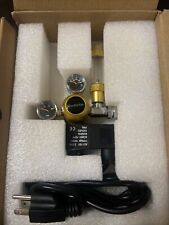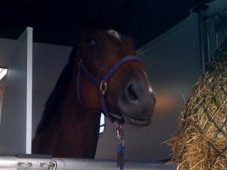Getting Acquainted with Your Horse

This is why I say you need to learn how to read your horse, observe its reactions to different methods. You must train your horse according to its temperament. A good way to start is just to watch your horse either in the pasture or in the stall where he is at home. Also in its home corral. Observe it with other horses present to see where it fits in with the herd.
The horse I rode when I was a teenager was one of those horses that needed a firm hand. He was the kind that thought he could rule the roost. I had to make him see I was head horse in order to get him to mind me. The horse I have now is a timid horse, so I treat her with much more gentleness than I did the other horse.
Cindy( my present horse) was two and one half years old when I bought her. As a brown and white pinto filly, she was a wild untamed mustang. She was very unsure of herself and other horses could chase her away from her feed. I treated her very gently in order to get her confidence in me.
The first few weeks I worked with Cindy, I gave her two short lessons per day, one in the morning and one at night. Later I worked with her once a day. She was kept in a round pen at first and was very hard to catch. Later I moved her to a pen with corners and developed the training method I call the "Y Stance"
Using the "Y Stance"
With the Y Stance, you drive the horse into a corner, and stand far enough away from the horse where you don’t get kicked or struck by a front hoof by the horse. With your arms held high ( your arms do form the shape of a "Y") with a coiled rope in one hand, you keep the horse from leaving the corner by waving the rope towards him if he tries to go past you. Your horse will not try to go past you if you wave the rope vigorously and wave your arms around . Once the horse quits trying to go past you, quit waving your arms and rope and just talk to the horse. Don’t do anything else unless he tries to get out of the corner. Block his escape, even if you have to yell "Hah!" Some horses are more pushy than others.
Once the horse will stand still, you can approach him slowly. If he gets nervous, stop and allow him to calm down. You may not get past the point of just standing there for the first few days, but eventually your horse will learn to just stand in his corner. After the horse has stood quietly in the corner, you then turn away and leave him in his pen to eat or drink or sleep.
Continuing Your Progress
The next day you return and repeat the above process. Depending on the horse you may be able to approach him always come at him from the side, not the front or hind) and let him know you wont hurt him. When he accepts your presence, you can then begin to touch him all over, starting from the shoulder. Pet lightly but decisively, the shoulder, the neck, the back, the body, the forehead, and gently touch the muzzle and the ears.
Remember to be calm yourself, and don’t be nervous. Nervous trainers cannot teach a horse, because the horse is aware of your emotions even when you think they are well hidden. If you are nervous, do not attempt to train that day. Wait until you are calm.
Once you can touch a horse all over its body, you can even give him little massages with your fingertips. Now you have become acquainted with your horse, and he is now ready to listen to you when you begin his halter training.













